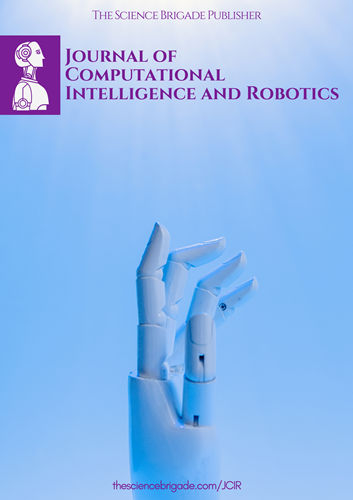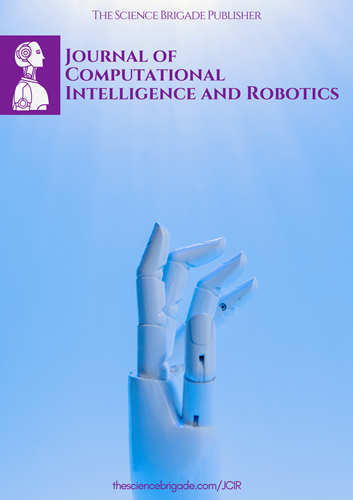Advanced AI Techniques for Real-Time Anomaly Detection and Incident Response in DevOps Environments: Ensuring Robust Security and Compliance
Keywords:
Anomaly Detection, Artificial Intelligence, DevOps, Incident Response, Machine Learning, Real-Time, Security, Security Information and Event Management (SIEM), Unsupervised Learning, Supervised LearningAbstract
The ever-evolving landscape of DevOps environments, characterized by continuous integration/continuous delivery (CI/CD) pipelines, microservices architectures, and dynamic infrastructure, necessitates a paradigm shift in security and compliance practices. Traditional, static security controls struggle to keep pace with the rapid deployment cycles inherent in DevOps. This research study investigates the application of advanced Artificial Intelligence (AI) techniques for real-time anomaly detection and incident response within these dynamic environments. Our primary objective is to explore how AI can empower DevOps teams to achieve robust security, ensure compliance, and facilitate swift resolution of security incidents.
The paper commences with a comprehensive overview of the challenges associated with security and compliance in DevOps. The limitations of traditional security methods, particularly their inability to adapt to rapid changes and the sheer volume of data generated, are highlighted. We then delve into the burgeoning field of AI and its potential to revolutionize security practices in DevOps. We explore a range of advanced AI techniques, including supervised and unsupervised machine learning algorithms, that can be leveraged for anomaly detection.
Supervised learning algorithms, trained on historical data labeled as normal or anomalous, excel at identifying patterns indicative of security incidents. Techniques like Support Vector Machines (SVMs) and Random Forests can be employed to classify system behavior as normal or anomalous based on predefined features. Conversely, unsupervised learning algorithms, operating without pre-labeled data, are adept at uncovering hidden patterns in complex datasets. Anomaly detection algorithms based on clustering techniques, such as K-Means clustering, can identify deviations from established baseline behavior, potentially revealing previously unknown threats.
The paper delves into the critical consideration of data selection and pre-processing for effective AI-powered anomaly detection. We discuss the importance of identifying relevant data sources pertinent to security within the DevOps environment, such as application logs, infrastructure metrics, and network traffic data. Techniques for data cleaning, normalization, and feature engineering are explored, as these steps can significantly impact the accuracy and efficiency of anomaly detection models.
Real-time anomaly detection is a crucial aspect of ensuring swift incident response. We examine how AI can be leveraged to analyze data streams in real-time, enabling immediate identification of potential security breaches or system malfunctions. Stream processing techniques, coupled with anomaly detection algorithms, enable continuous monitoring and proactive response to security incidents. Additionally, the paper explores the concept of anomaly scoring, where anomalies are assigned severity levels based on their potential impact, allowing for prioritization of incident response efforts.
The paper emphasizes the integration of AI-powered anomaly detection with Security Information and Event Management (SIEM) systems. SIEM platforms provide a centralized repository for security data from diverse sources across the DevOps environment. By integrating AI capabilities into SIEM, organizations can leverage advanced analytics and anomaly detection functionalities to gain deeper insights into security posture and expedite incident response.
Furthermore, the paper explores the role of AI in automating incident response workflows. Techniques like supervised learning can be employed to classify security incidents based on historical data, enabling automated response playbooks to be triggered for specific threats. This automation can significantly reduce Mean Time to Resolution (MTTR) by streamlining incident response procedures and freeing up critical human resources for more complex tasks.
The research also investigates the potential of AI to enhance compliance in DevOps environments. Regulatory requirements often mandate the implementation of robust security controls and detailed audit trails. AI-powered anomaly detection can be leveraged to generate comprehensive logs and audit trails, providing a clear picture of security posture and facilitating compliance audits. Additionally, AI can assist in automating security compliance checks throughout the CI/CD pipeline, ensuring continuous adherence to security best practices.
A critical analysis of the challenges associated with adopting AI for anomaly detection and incident response in DevOps is presented. Issues such as potential bias in training data, explainability of AI models, and the need for skilled personnel are addressed. Strategies for mitigating these challenges, such as data augmentation techniques to address bias, development of explainable AI (XAI) models, and the integration of AI with human expertise, are explored.
The paper concludes by summarizing the key findings of the research. The significant potential of AI in revolutionizing security and compliance practices within DevOps environments is highlighted. By leveraging advanced AI techniques for real-time anomaly detection and incident response, DevOps teams can ensure robust security, achieve compliance objectives, and facilitate swift resolution of security incidents. Finally, the paper outlines future research directions in this domain, including the exploration of deep learning techniques for anomaly detection and the integration of AI with DevOps security tools for a more holistic approach.
Downloads
Downloads
Published
Issue
Section
License

This work is licensed under a Creative Commons Attribution-NonCommercial-ShareAlike 4.0 International License.
License Terms
Ownership and Licensing:
Authors of this research paper submitted to the journal owned and operated by The Science Brigade Group retain the copyright of their work while granting the journal certain rights. Authors maintain ownership of the copyright and have granted the journal a right of first publication. Simultaneously, authors agreed to license their research papers under the Creative Commons Attribution-NonCommercial-ShareAlike 4.0 International (CC BY-NC-SA 4.0) License.
License Permissions:
Under the CC BY-NC-SA 4.0 License, others are permitted to share and adapt the work, as long as proper attribution is given to the authors and acknowledgement is made of the initial publication in the Journal. This license allows for the broad dissemination and utilization of research papers.
Additional Distribution Arrangements:
Authors are free to enter into separate contractual arrangements for the non-exclusive distribution of the journal's published version of the work. This may include posting the work to institutional repositories, publishing it in journals or books, or other forms of dissemination. In such cases, authors are requested to acknowledge the initial publication of the work in this Journal.
Online Posting:
Authors are encouraged to share their work online, including in institutional repositories, disciplinary repositories, or on their personal websites. This permission applies both prior to and during the submission process to the Journal. Online sharing enhances the visibility and accessibility of the research papers.
Responsibility and Liability:
Authors are responsible for ensuring that their research papers do not infringe upon the copyright, privacy, or other rights of any third party. The Science Brigade Publishers disclaim any liability or responsibility for any copyright infringement or violation of third-party rights in the research papers.




